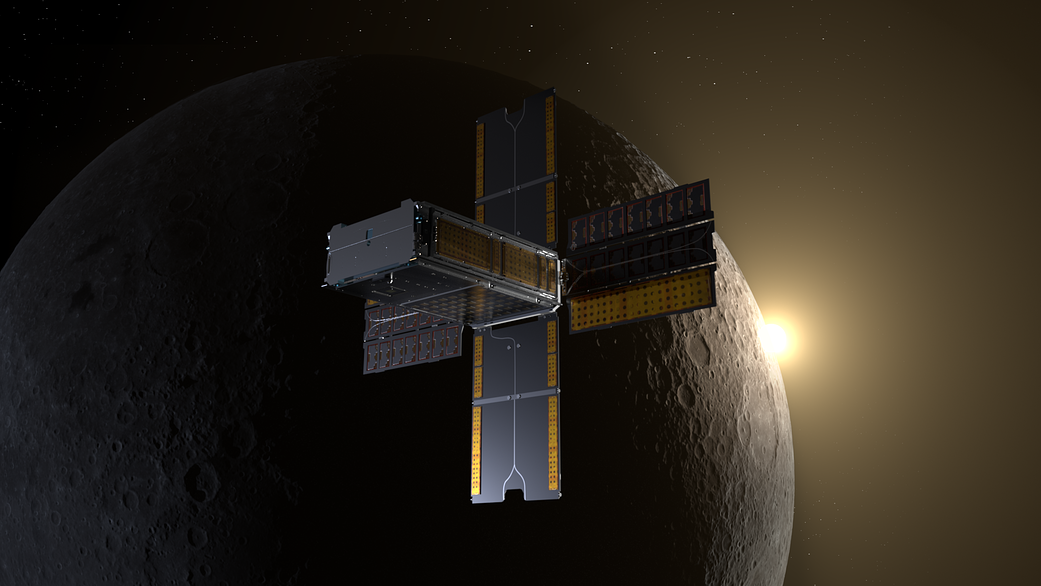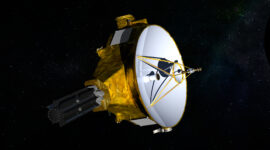For decades, space exploration has been synonymous with colossal, multi-million dollar spacecraft, often the size of a minivan or even a school bus. These magnificent machines, while yielding invaluable data, come with prohibitive costs and lengthy development cycles. Enter CosmoCube, a groundbreaking initiative that epitomizes the “tiny satellite revolution.” This UK-led mission aims to deploy a compact, low-cost satellite to lunar orbit, not for Earth observation or communication, but to listen for the faint whispers of the universe’s “Dark Ages,” a period shortly after the Big Bang and before the first stars ignited. CosmoCube is poised to unlock profound secrets about our cosmic origins, all while showcasing the immense potential of miniaturized space technology.
Unveiling the Cosmic Dark Ages
The universe’s “Dark Ages,” occurring roughly 380,000 years to 1 billion years after the Big Bang, represent a poorly understood chapter in cosmic evolution. During this epoch, the universe was primarily filled with neutral hydrogen, and light-emitting objects like stars and galaxies hadn’t yet formed. Scientists believe that faint radio signals from this neutral hydrogen, specifically the redshifted 21-centimeter line, hold crucial clues about how the universe transitioned from a simple, dark state to the complex, light-filled cosmos we observe today. However, detecting these incredibly weak signals from Earth is akin to trying to hear a whisper during a loud rock concert, due to the overwhelming radio interference from human activities.
CosmoCube’s ingenious solution is to position itself in orbit around the far side of the Moon. The Moon itself acts as a natural shield, blocking out Earth’s radio noise and providing an unparalleled, pristine environment for detecting these ancient cosmic signals. By operating at low frequencies (10-100 MHz) with a precision-calibrated, low-power radio radiometer, CosmoCube aims to create an “intensity map” of hydrogen emission from this enigmatic period. This data could shed light on fundamental cosmological questions, including the Hubble tension – the perplexing discrepancy in measured expansion rates of the universe – and the mysterious interactions between dark matter and baryonic matter.
The Tiny Satellite Revolution: A Paradigm Shift
CosmoCube is a prime example of how CubeSats and other small satellites are democratizing access to space and accelerating the pace of scientific discovery. Traditional large satellites, while powerful, are expensive to design, build, and launch, often taking many years to go from concept to deployment. The cost and complexity lead to fewer missions and higher risks if a failure occurs.
In contrast, tiny satellites offer several compelling advantages:
- Affordability: Significantly lower development, manufacturing, and launch costs make space missions accessible to a broader range of institutions, including universities and smaller companies.
- Rapid Development and Deployment: Their simpler design and smaller scale allow for quicker iteration and deployment, enabling more frequent missions and faster scientific returns.
- Constellation Capabilities: The ability to launch multiple small satellites in a single rocket, forming “constellations,” provides enhanced coverage, resilience against individual satellite failures, and a broader range of observation points for complex phenomena.
- Dedicated Missions: Unlike large, multi-purpose satellites, small satellites can be purpose-built for a single, specific scientific objective, simplifying their design and operation.
- Reduced Risk: The lower cost per unit means that a failure of one small satellite isn’t as catastrophic as the loss of a large, expensive spacecraft. This allows for the integration of newer, less space-tested technologies, fostering rapid innovation.
These benefits are fundamentally changing the landscape of space exploration, opening up new frontiers that were previously unattainable due to financial and technological barriers.
Technological Advancements Powering CosmoCube
The feasibility of CosmoCube and similar missions relies heavily on continuous advancements in miniaturization and associated technologies. Key technological innovations powering this tiny satellite revolution include:
- Miniaturization of Components: Breakthroughs in microelectronics and materials science have allowed for the drastic shrinking of sensors, processors, communication systems, and power units, all while maintaining or even enhancing performance.
- Advanced Propulsion Systems: While small satellites often “hitch a ride” on larger launch vehicles, ongoing development in compact, efficient propulsion systems is crucial for orbital maneuvering and mission longevity.
- Onboard Processing and Control: Enhanced computing power within a small footprint allows for greater autonomy and complex data processing onboard the satellite, reducing reliance on constant communication with Earth.
- Compact Communication Systems: Innovations in antenna design and radio frequency technology enable robust data transmission within the constraints of a small satellite.
- Power Optimization: Efficient power management and the development of lightweight, high-capacity batteries and solar panels are critical for sustained operation in space.
- Radiation Hardening: Ensuring the durability of commercial off-the-shelf (COTS) components in the harsh space environment, which includes intense radiation, is an ongoing area of development.
CosmoCube specifically features a Radio Frequency System-on-Chip (RFSoC)-based receiver calibration system. This advanced design helps it accurately model and calibrate complex, non-linear system behaviors, crucial for detecting extremely faint signals.
Funding and Partnerships
The CosmoCube mission is a testament to international collaboration and strategic funding. It is primarily supported by the UK Space Agency’s Science Bilateral Programme. This funding initiative aims to foster scientific partnerships with international institutions to advance space research.
The project is being developed by a UK-led international consortium comprising researchers from:
- University of Cambridge: Leading the scientific objectives and instrument development, particularly in radio cosmology.
- University of Portsmouth: Instrumental in the pilot study for mission design and concurrent engineering, drawing inspiration from NASA’s Jet Propulsion Laboratory (JPL) to rapidly develop the mission concept.
- STFC RAL Space: Contributing expertise in space platform and mission concept development, including environmental testing of the satellite model.
- SSTL Ltd (Surrey Satellite Technology Ltd): A key industry partner developing the space platform and overall mission concept.
This collaborative approach, integrating academic research with industry expertise, is a model for efficient and effective space mission development.
Recent Updates and Future Prospects
As of July 2025, the CosmoCube mission is progressing steadily with significant recent developments:
Recent Updates:
- Instrument Development Underway: Functioning laboratory prototypes of CosmoCube’s core instrument, the precision-calibrated, low-power radio radiometer, are undergoing rigorous environmental testing at RAL Space facilities. This critical phase ensures the instrument can withstand the harsh conditions of space.
- Focus on Cosmic Dark Ages: Recent discussions and presentations, such as a talk at the National Astronomy Meeting (NAM) in July 2025, have re-emphasized CosmoCube’s primary scientific goal: to probe the cosmic Dark Ages and the subsequent Epoch of Reionization by detecting the redshifted 21-cm hydrogen signal.
- Lunar Orbit Strategy Confirmed: The mission concept firmly targets a lunar orbit, specifically leveraging the far side of the Moon as a natural shield against Earth-based radio interference. Studies have focused on identifying optimal lunar orbits for maximum shielding time.
- 4-5 Year Roadmap to Launch: The consortium is working towards a launch within the next four to five years, with the ambitious goal of reaching lunar orbit before the end of the decade (2030).
- Addressing Hubble Tension and Dark Matter: Scientists involved in CosmoCube continue to highlight its potential to offer insights into the Hubble tension and explore potential non-gravitational interactions between dark matter particles and ordinary matter.
Future Prospects:
CosmoCube stands at the forefront of a new era of space exploration, demonstrating the immense scientific return possible from highly focused, cost-effective small satellite missions. Its success could pave the way for a new generation of lunar-orbiting or even deep-space CubeSats designed for specialized scientific investigations.
Beyond its immediate scientific objectives, CosmoCube’s impact extends to:
- Inspiration for STEM: The innovative and accessible nature of small satellite missions like CosmoCube can inspire future generations of scientists and engineers, encouraging participation in STEM fields.
- Technological Spin-offs: The advanced miniaturization, power management, and communication technologies developed for CosmoCube will likely find applications in other industries, contributing to broader technological advancements.
- Further International Collaboration: The successful model of collaboration demonstrated by CosmoCube’s UK-led consortium could foster more international partnerships in space exploration, sharing expertise and resources for ambitious scientific endeavors.
While challenges remain, such as ensuring long-term operational stability in the lunar environment and the precise calibration required for detecting incredibly faint signals, CosmoCube’s progress signifies a powerful shift. It heralds a future where space exploration is not solely the domain of a few large agencies, but a more agile, collaborative, and ultimately, more expansive human endeavor. The tiny satellite is indeed revolutionizing our quest to understand the universe, one whisper from the cosmos at a time.




